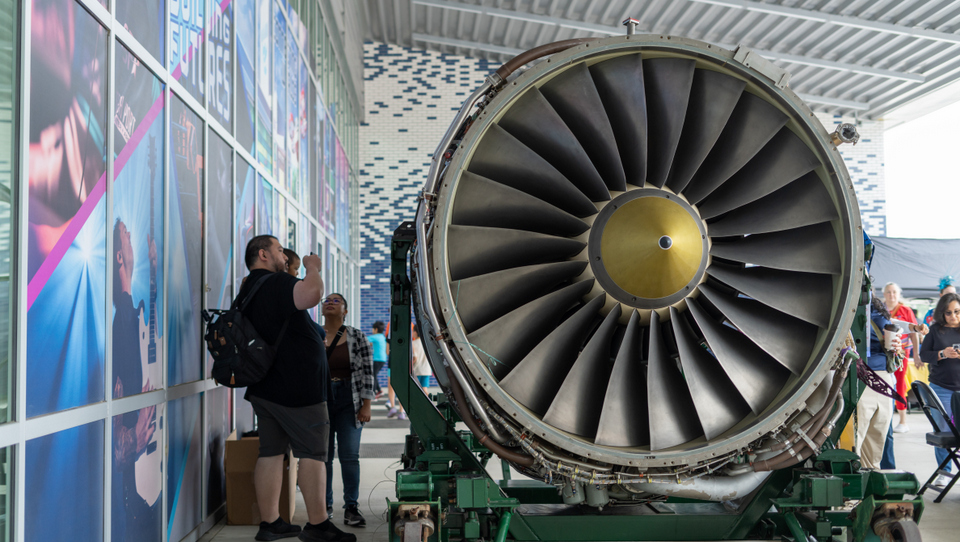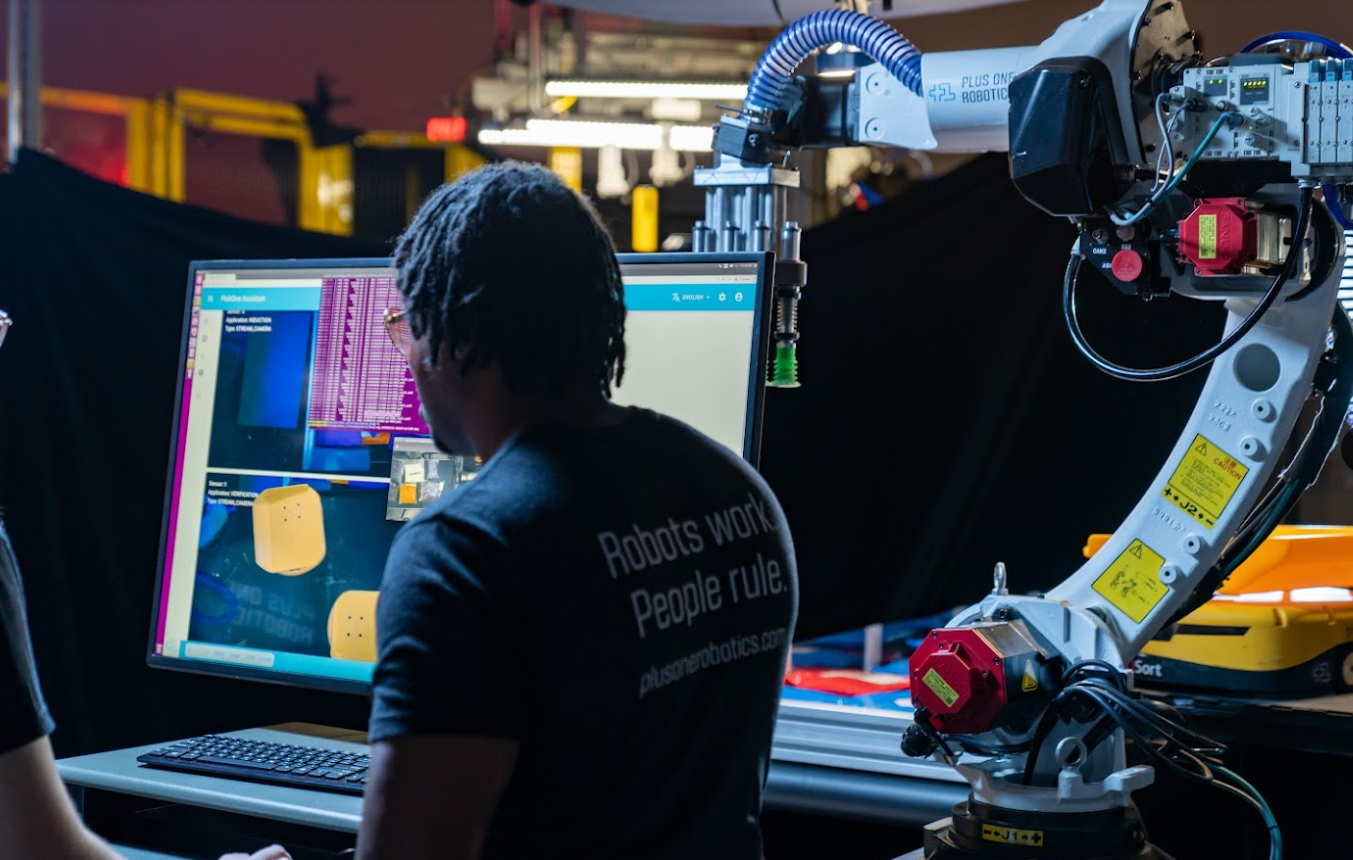In the near future, mines and factories on the Moon will support the construction of massive satellites and other orbiting infrastructure to address humankind’s needs back on Earth.
San Antonio team is focused on initial exploratory missions to map and obtain baseline data using a LiDAR robot without disturbing or inadvertently contaminating potential sites for future settlements.
03-27-2023
Downloadable Version
SAN ANTONIO, TX — Later this year, a group of three local scientists will take a canine-like robot — the popular Spot model, developed by Boston Dynamics — and venture deep into a South Texas cave.
The upcoming venture into the Earth's crust marks the latest step by the group of experts to develop a detailed step-by-step set of recommendations that will allow NASA and other organizations to plan exploratory missions on the Moon using similar technologies to identify, carefully map out and get accurate readings of a lunar lava tube site ahead of human arrival and settlement.
The partnership by the San Antonio-based WEX Foundation, Exploration Architecture Corporation (XArc) and Southwest Research Institute (SwRI) has already produced an initial set of recommendations that were recently published in the prestigious Planetary Science Journal of the American Astronomical Society (AAS) in an article titled Leto Mission Concept for Green Reconnaissance of the Marius Hills Lunar Pit.
ABOVE — Some Texas caves can be used as analogs to caves on the Moon, like the cave in Kickapoo Caverns State Park, about 150 miles west of San Antonio. (image credit: WEX Foundation)
BELOW — Conceptual renderings of a lunar lava tube as it is developed as a human settlement. (image credits: XArc)
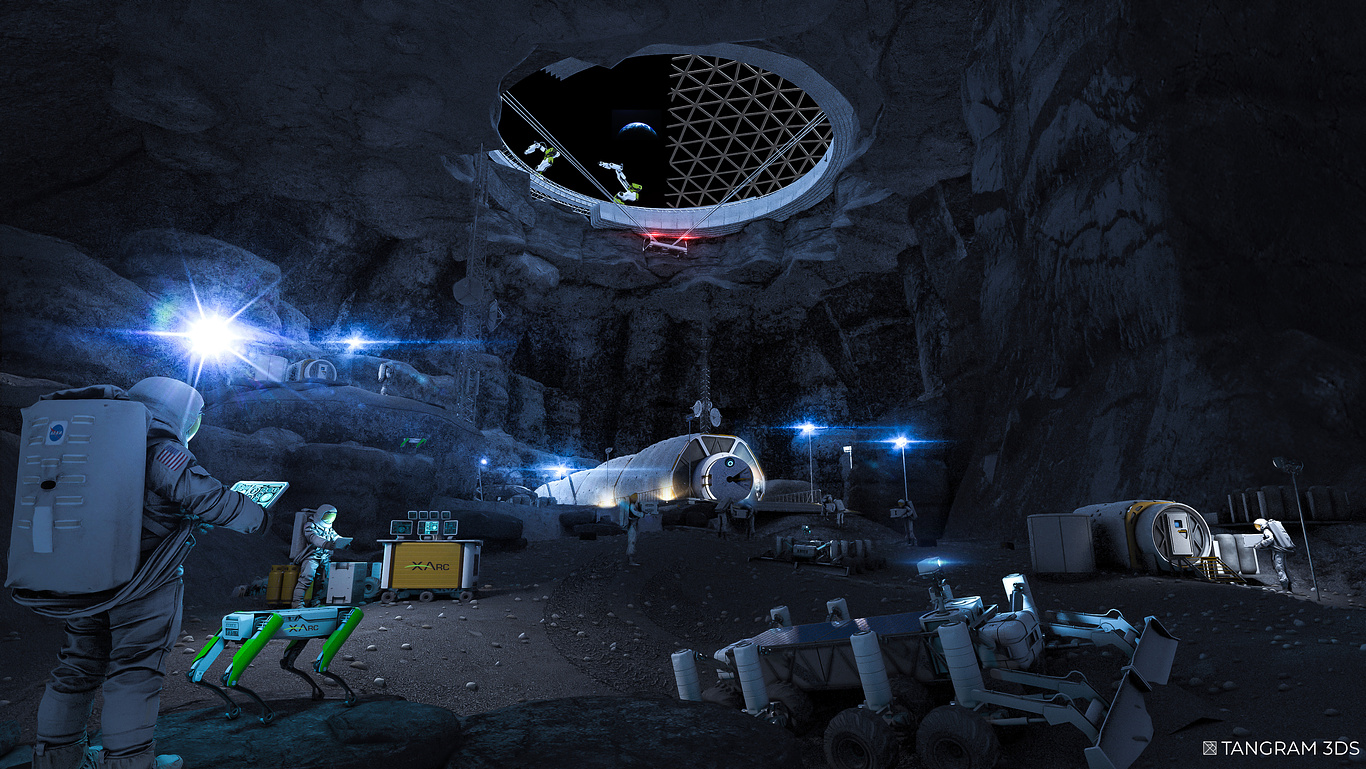
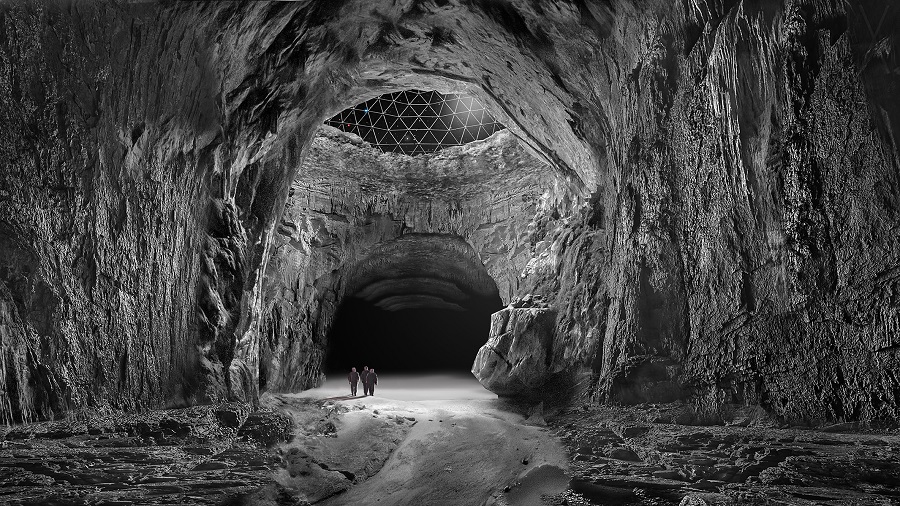
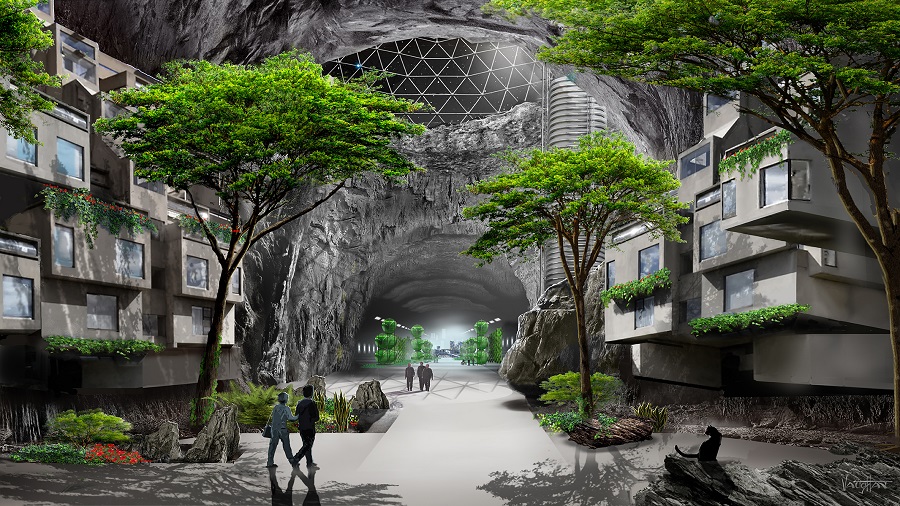
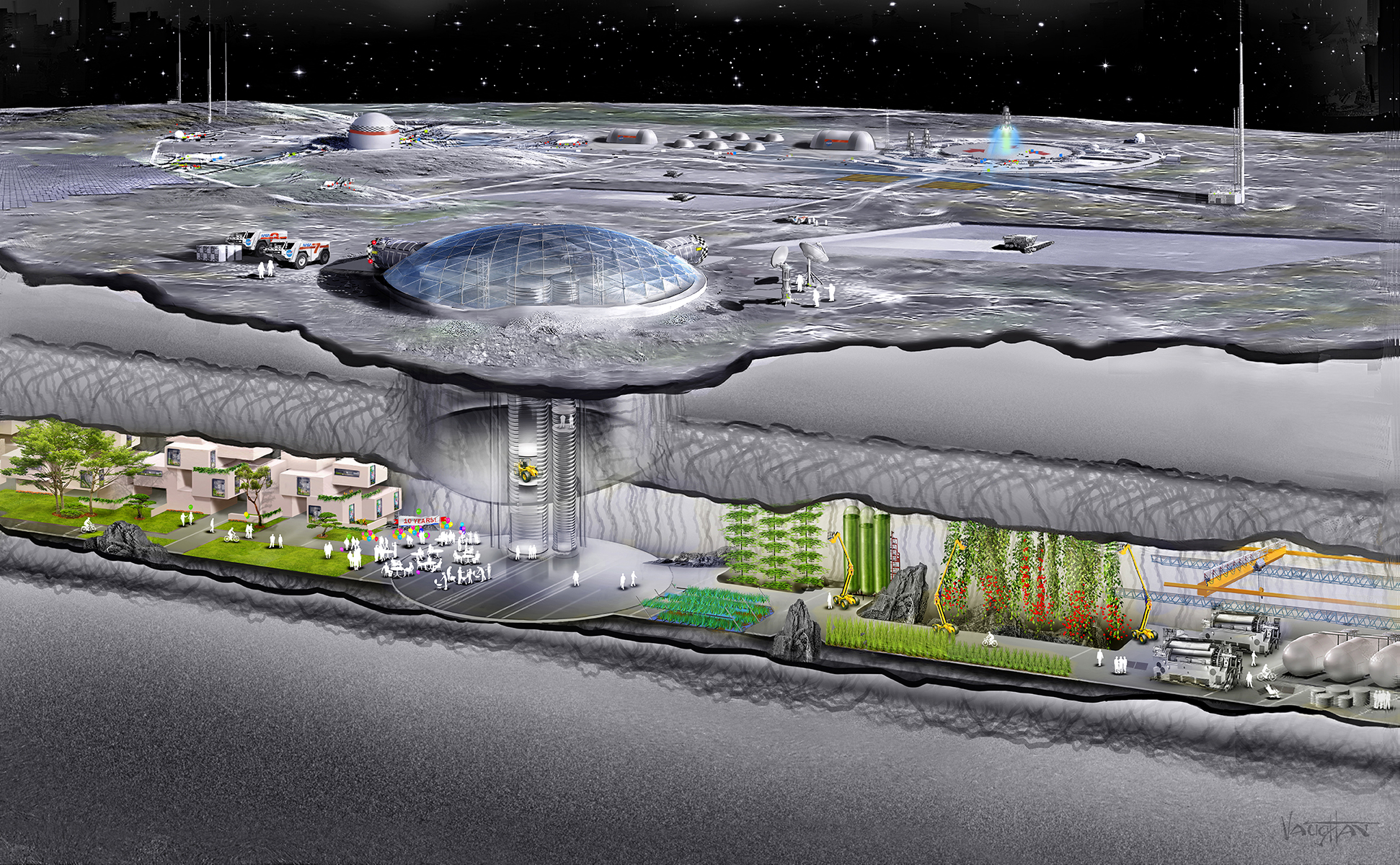

Spot, by Boston Dynamics. The researchers will outfit a similar robot with various instruments to undertake the exploration of local caves — an essential part of providing additional recommendations to inform some of the first unmanned exploratory missions of the Moon. (image credit: Boston Dynamics)
As part of the upcoming field tests, the robot that will venture into a Texas cave will be outfitted with laser-based LiDAR visual sensory technology and other instruments that will take a range of measurements similar to those that will be obtained as part of the initial exploratory missions on the Moon.
Recently, much attention has been focused on missions to the lunar south pole region as part of the NASA Artemis mission, and the authors of the paper make the case that other lunar sites are also deserving of, and in contention for, exploration.
The San Antonio group recommends launching unmanned spacecraft and robots to explore a cave in the Marius Hills region of the Moon. The Marius Hills Hole is a 45-meter deep hole in the lunar surface that serves as a giant skylight or opening to a potentially extensive cave system that could be part of a large underground lava tube. These cave-like formations are plentiful on the Moon and were created billions of years ago when the young satellite's surface, like the early Earth's, was still molten.
The authors believe the Marius site can eventually be developed for future human settlement. The phases for development of the site are expressed in their Lunar Ecosystem and Architectural Prototype (LEAP2) concept. In conjunction with the journal publication, the WEX Foundation has released a series of videos illustrating how the growth of the Marius Hills site development evolves from initial reconnaissance by robots to a complete lunar settlement by the end of this century. (You can view these videos, which cover an introduction to LEAP2, the detailed Leto mission and the infrastructure build-out phase, by clicking on the respective links.)
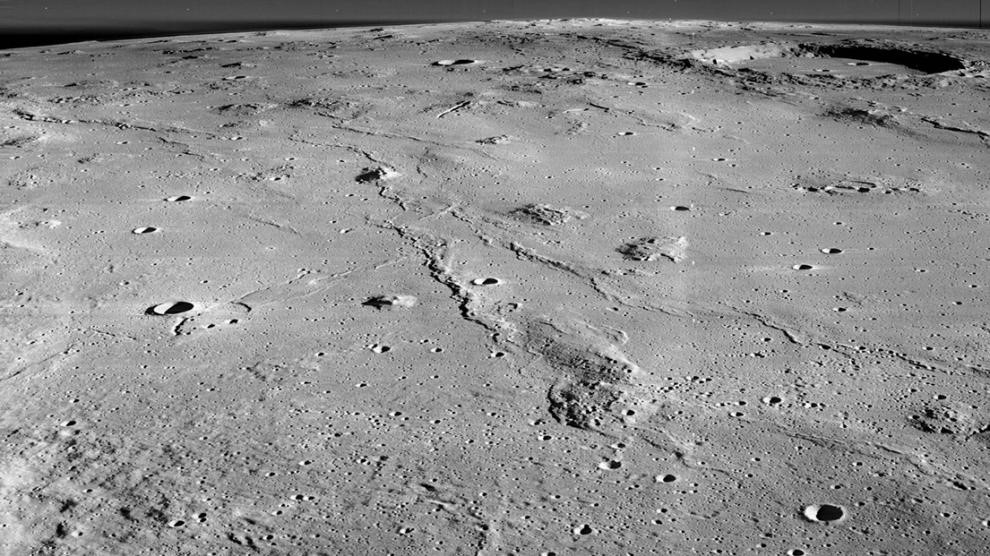

Proposed location of the LEAP2 lunar settlement. (image credit: NASA/ASU Marius Hills region and Marius Hills Hole)
The lava tubes are essential to human settlement of the Moon, since they provide shelter from dangerous levels of surface radiation and the constant threat of micrometeorites and other hazards.
Of special significance, the research by the San Antonio group focuses on exploring the candidate site using "green reconnaissance" methods — being extremely careful to obtain accurate and very detailed readings and measurements of an environment that has remained pristine for billions of years. This information — free from contamination and other human interference — will provide scientists with valuable baseline data from which to develop near- and long-term plans toward human settlement, since future exploratory missions will require more intrusive methods, such as drilling for geological samples and eventually geotechnical engineering for infrastructure construction.
The reconnaissance mission referenced in the academic paper is named after the goddess Leto, mother of Apollo and Artemis. Like Leto in her labor sought out a place of refuge to deliver her twins, so might this lava tube give birth to a lunar settlement for human habitation.
Eventual settlement of the Moon — initially by robots and other machines and ultimately by larger groups of humans — will be a critical step in addressing pressing concerns on Earth. Among the innovations that will be supported by lunar settlements are factories that will use minerals that are in abundant supply on the lunar surface as a source material for the construction of massive satellite arrays — some of them several miles in length — orbiting the Earth.
These would include satellites that harness vast amounts of solar power, convert it to electricity and transmit it wirelessly as microwaves back to receiving stations on Earth — a concept that scientists at NASA and across the world have considered for decades.
With one-sixth of Earth's gravitational pull, sourcing materials from the Moon and launching them toward a terrestrial orbit will prove far more efficient than sending supply rockets directly from Earth.
Additionally, the partners are well on their way in advancing research on how infrastructure on the Moon can be built using dirt rocks that comprise the lunar surface, also known as regolith, that comprise the lunar surface as the principal building material. By heating the minerals into a molten state similar to volcanic lava on Earth, a system of robots and large 3D printers can use the material to create the initial landing pads, habitats, factories and other infrastructure long before the arrival of humans.
Building blocks for extra-terrestrial colonization: Powdered basaltic matter is subjected to high temperatures in the research team's experimental vacuum oven and then molded into bricks to create building components for landing pads on the Moon and Mars. Image credit: Astroport Space Technologies/WEX Foundation.
Researchers are also working on experimental nozzles that can produce specially-shaped bricks for various construction projects. Image credit: Astroport Space Technologies/WEX Foundation.
To achieve this transformational vision for our planet, the most important resource is human ingenuity and talent across different generations. This is why the WEX Foundation, established 12 years ago by San Antonio-based and world-renowned space architect Sam Ximenes, has been steadfast in inspiring and preparing the next generation of space science innovators.
Among his organization's endeavors are various exhibits created by the WEX Foundation, which are open and free to the public at the San Antonio Museum of Science and Technology's (SAMSAT) AREA 21 and which provide an overview of the concepts of lunar settlement and the many applied technologies required.

Students taking part in a cave exploration field trip as part of the Lunar Caves Analog Test Sites (LCATS) program. LCATS engages a pipeline of local students to assist aerospace professionals in solving real-world space exploration technology development challenges. (image credit: WEX Foundation)
At the museum, Ximenes and his team — many of them area middle schoolers who participate in WEX's Lunar Caves Analog Test Sites (LCATS) program — showcase some of the key components of the journey toward a fully developed lunar settlement, including how habitats and factories on the Moon and in orbit can be built using 3D printing technology and robotics long before the arrival of humans.
And in a nearby exhibit, the museum hosts one of the world's largest array of Tesla coils — a favorite of visiting school groups as the giant electric sparks jumping between the coils can be set to music. But importantly, the exhibit is an introduction to the fact that electricity can be transmitted without the use of wires — the fundamental concept behind the development of large space-based power generators.
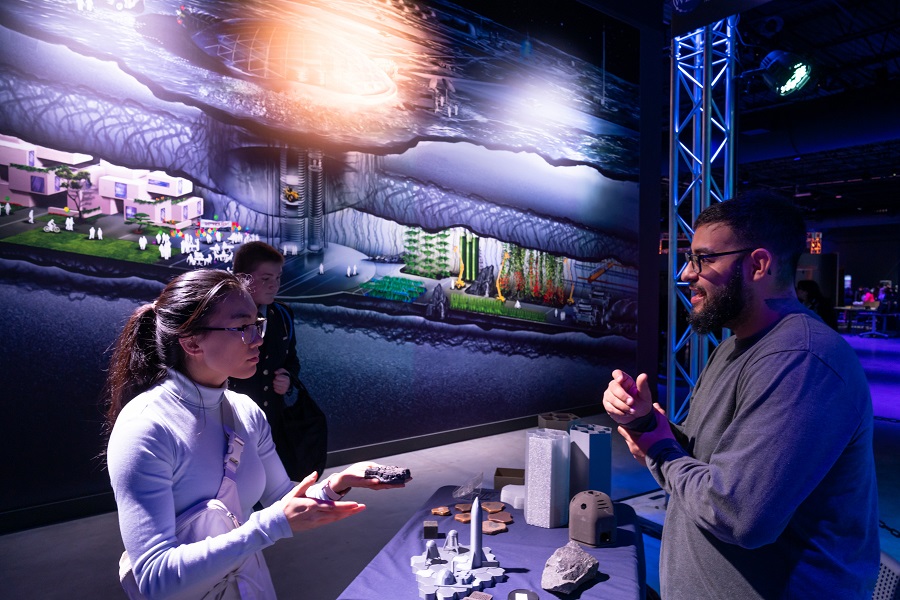
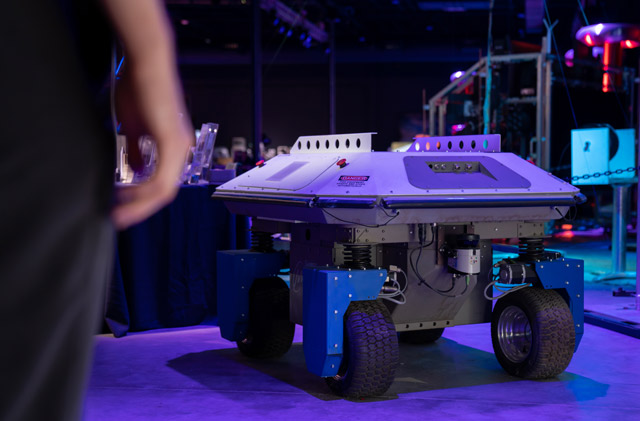
STEM-based exhibits designed by the WEX Foundation team are on display at SAMSAT's AREA 21. (image credits: Marks Moore (top) and Port San Antonio (bottom))
"I have no doubt of the eventuality of a thriving lunar economy where goods and services are being exchanged between the Earth and Moon," said XArc President and CEO Sam Ximenes. "XArc is happy to support the WEX Foundation with their education programs that teach our next generation of explorers that it will be their boots on the Moon making lunar settlement happen."
"A fleet of international spacecraft are heading to the lunar surface within this decade," added Edward Patrick, Lead Scientist in the Space Science & Engineering Division at SwRI. "As we take our next step in the permanent settlement of space, a lunar economy from the resources of the Moon will develop. Southwest Research Institute is proud to be a part of this off-planet industry that will inspire the leaders and explorers of tomorrow."
"WEX continues to produce innovative educational programs and to develop new technologies for space exploration," said WEX Foundation Staff Scientist Donald Hooper, Ph.D. "Along the way, WEX aims to raise San Antonio's global profile as a leading place with expertise in various space disciplines, including the construction of habitats, off-planet factories and other infrastructure for the successful settlement and commercialization of the Moon and Mars. While planning to settle a lunar cave or pit may seem like a retreat to our more primal past, it could actually be a pivotal step forward on a new world."
"We are incredibly excited about the work that these three collaborators are undertaking and how they are literally mapping out humankind's future by harnessing space and making Earth a safer and more productive home," said Port San Antonio President and CEO Jim Perschbach. "We are proud that the Port campus is home to the WEX Foundation and XArc, and that their home base here allows their teams to collaborate with other experts in our region like Southwest Research Institute and create some amazing opportunities for today's and future generations of innovators."



